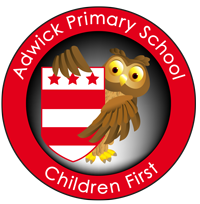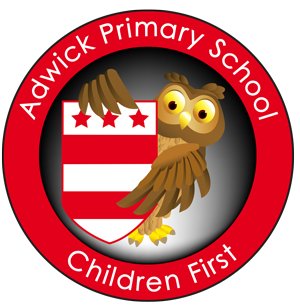Writing curriculum statement
Curriculum overviews:
Curriculum DESIGN & INTENT
Curriculum coverage
The school’s curriculum meets the statutory requirements of the EYFS Statutory Framework and the National Curriculum. This is studied by all pupils in their relevant Key Stage.
After researching various approaches to writing, to meet our pupils’ needs, the school has created a teaching structure of writing to deliver our writing curriculum. This structure has been created based on the recommendations from the EEF guidance reports for “Improving Literacy” in EYFS, KS1 and KS2. It iscorrelated against the National Curriculum’s objectives to ensure that our pupils study the full Early Years curriculum and National Curriculum for writing.
Coherently planned and sequenced
Writing is prioritised to allow pupils to access the full curriculum offer. A rigorous and sequential approach to the writing curriculum develops pupils’ writing composition strategies through modelling and supported practice. It also develops pupils’ transcription and sentence construction (grammar) skills through extensive practice. There is a sharp focus on ensuring that younger children at the early stages of writing gain motor skills, leading to creating marks for meaning. This is coupled with the acquisition of vocabulary to write for a range of purposes. This gives them the foundations for future learning. This is done alongside the adoption of the Read Write Inc phonics and spelling programmes (RWI). At all stages, writing attainment is assessed and gaps are addressed quickly and effectively for all pupils.
Documentation that underpins this, and that outlines a rigorous and sequential structure, has been devised by the school for Teachers and Literacy Leaders to use so that they have a firm and common understanding of the school’s curriculum intent.
This documentation is saved centrally in our electronic curriculum handbook, and includes :
- Teaching Structure of Writing Curriculum
- Writing Critical Skills and Knowledge
- Writing Progression Grid
- Text Type Coverage
Teaching for Mastery – ambition and equitable opportunities for all
We deliver an ambitious curriculum for all pupils by following a ‘teach to the top’ approach (based on age-related EYFS Statutory Framework and National Curriculum expectations) through Mastery Teaching via the school’s Mastery Learning Model as outlined in the school’s Mastery Teaching document.
Teaching for mastery is also central to the EEF guidance. This supports our belief that, although pupils vary widely in their learning rates and modalities, nearly all pupils can reach a high level of achievement. We achieve this by keeping learning outcomes constant for all pupils (with the exception of extreme SEND pupils who may be on an individualised curriculum) but vary the time, support and resources needed for pupils to become proficient or competent at these objectives.
There are no preconceptions or limitations placed on a pupil’s context, ability or the progress they can make. This provides them with the same opportunities as their peers, not only on a local level but also on a national level. Therefore, all pupils, regardless of background or starting points, have equitable access to the full curriculum.
It is expected that the vast majority of pupils will achieve academic competency:
- We define academic competency as Stage 3 or above in the school’s 4 stages of competence/learning table, outlined in the school’s Mastery Teaching document.
- We define the vast majority as approximately 90% of pupils, dependent on cohort and taking into account the number of EHCP and extreme SEND (on individualised plan).
- For any pupils who do not reach the required level of academic competency/learning (Stage 3 or above), they will be further supported through additional focused intervention to secure academic competency. This will be achieved by corrective instruction through writing and phonics interventions in-line with our Mastery Teaching Model. Any pupils on an individualised learning plan will work on their individualised targets.
In order to move to the next objective (whichever is the most appropriate for the next step in learning), the above criteria must be achieved for key skills and knowledge that the school deems non-negotiable (see critical skills and knowledge document ) or is necessary for the next step in learning.
Writing approach
The EEF has divided literacy teaching into a number of strands. Adwick’s Teaching Structure of Writing covers writing composition,and transcription and sentence construction (grammar). Adwick’s Teaching Structure of Writing mirrors the EEF guidance.
Writing composition strategies through modelling and supported practice
Purpose and audience are central to effective writing. Pupils need to have a reason to write and someone to write for.
Writing can be thought of as a process made up of seven components:
- planning
- drafting
- sharing
- evaluating
- revising
- editing
- publishing
Effective writers use a number of strategies to support each component of the writing process. Pupils should learn how, when, and why to use each strategy. For example, pupils’ planning could be improved by teaching the strategies of goal setting and activating prior knowledge. The strategies should be described and modelled before pupils practise them with feedback. Support should then be gradually reduced as pupils take increasing responsibility and is capable of completing the activity independently.
The process for Writing Composition:
This will be a 3-phase process:
- Pre-writing stage (for a written piece)
- The writing process
- Publishing
Developing pupils’ transcription and sentence construction (grammar) skills through extensive practice
Transcription refers to the physical process of handwriting or typing, and spelling. Children must develop fluency in these skills to the point that they have become automated. A fluent writing style supports composition because pupils’ cognitive resources are freed from focusing on handwriting, spelling, and sentence construction and can be redirected towards writing composition.
Extensive practice, supported by effective feedback, is required to develop fluent transcription skills.
Spelling is explicitly taught, we do this via RWI Phonics, RWI Spelling and some grammar sessions in EYFS and Y1. However, spellings could focus on spellings that are relevant to the topic or genre being studied.
Pupils should also practise sentence-combining and other sentence construction techniques.
Curriculum IMPLEMENTATION
Writing Timetabling
We teach writing Tuesday to Friday key stage 1 and 2 (Monday to Friday in Early Years). This is outlined in the school’s curriculum timetables. See Teaching Structure of Writing Curriculum
Pupils’ Work
The work given to pupils is demanding and matches the aims of the curriculum in being coherently planned and sequenced towards cumulatively sufficient age-related knowledge. See page 2 in Teaching Structure of Writing Curriculum.
In YN, writing tasks are recorded in Literacy books at least twice per unit. Books will evidence skills against the EYFS Curriculum (Nursery Statements).
In YR, writing tasks are recorded in Literacy books at least once a week. Books will evidence skills against the EYFS Curriculum (Reception Statements).
In KS1 and KS2, daily work is expected in writing. Pupils will independently record grammar and writing in Literacy books. Books will evidence skills against the KS1 and 2 Literacy Curriculum.
Assessment
Staff use the Mastery Learning Model as a framework for Assessment for Learning (AfL) to check children’s understanding and identify misconceptions. This is done through writing and grammar tasks. Staff respond and adapt their teaching as necessary based on the outcomes of AfL strategies.
School based writing assessments, for all year groups, are assessed against the school’s Writing Assessment Grids that align to the EYFS and National Curriculum. Summative assessments of writing are collated termly and based on evidence in independent work in Literacy books and Writing portfolios.
End of key stage assessment judgements for the Early Years are based on teacher assessments using the ELGs from the EYFS Statutory Framework. Evidence for the ELG will come from evidence in independent work in Writing portfolios, collated throughout the academic year. These are completed by YR teachers by the end of May and moderated by SLT before submission.
End of key stage assessment judgements for KS1 and KS2 are based on teacher assessments using the Standards & Testing Agency English Writing Teacher Assessment Framework (TAF). Evidence for the TAF will come from evidence in independent work in Literacy books and Writing portfolios, collated throughout the academic year. These are completed by Y2/Y6 teachers by the end of May and moderated by SLT before submission.
The outcomes of the above assessments are used to address gaps in achieving ARE and relevant interventions and adaptions to teaching content are put in place.
Curriculum IMPACT
Attainment & Progress
The impact of the curriculum on what children know, can remember and do is strong. This is evidenced through overall outcomes and therefore:
By the end of each Key Stage, we want all pupils – regardless of context, background or starting points – to make rapid progress towards achieving age-related expectations and to be at least in-line with their peers nationally. Where this is not the case, any gap to their national peers is closing rapidly.
As a result, by the end of each key stage, all of our pupils, regardless of context, background or starting points, will be have the knowledge and skills that they need for the next stage of their education.
Pupils’ work
Across all key stages, the pupils’ work will show work created and published to a consistently high quality, demonstrating what they know and can remember. Throughout school, pupils’ work will evidence rapid progress demonstrating that they are able to apply their writing skills and knowledge appropriate for their age. This will consist of:
By the end of Foundation stage:
- Hold a pencil effectively in preparation for fluent writing – using the tripod grip in almost all cases.
- Write recognisable letters, most of which are correctly formed;
- Spell words by identifying sounds in them and representing the sounds with a letter or letters;
- Write simple phrases and sentences that can be read by others.
- Meet the expected standard as outlined in the ELG.
By the end of Key Stage One:
- Meet the expected standard as outlined in the TAF.
By the end of Key Stage Two:
- Meet the expected standard as outlined in the TAF.
Pupils’ attitudes to learning
Writers at Adwick, regardless of their age, have a positive attitude to writing which is shown through resilience, confidence and application of skills taught through RWI, writing and grammar lessons.
From learning walks and pupil consultation, pupils will demonstrate:
- Confident, resilient and independent writing.
- Consistent positive attitudes and commitment to writing.
- High levels of motivation and an eagerness to join in.
- A deep level of engagement, sustaining high levels of concentration.
- They know how they learn effectively, and do so.
- Resilience to setbacks, demonstrating persistence in the face of difficulties, especially when working on challenging texts.
- They are prepared to take risks to achieve more.
- They learn through exploration of texts.
- They work together as a ‘Team’ to achieve their learning goals.
- They learn from each other through collaboration, reflection and peer challenge.
- Pride in their work and achievements.
“Ambitious for SEND Pupils: Leaders are ambitious for pupils with special educational needs, ensuring they receive good support and achieve well.“
“Strong Early Years Provision: The early years provision is effective, with strong relationships between adults and pupils, a well-organized environment, and activities that enthuse children.“
“Broad Curriculum: Leaders provide a broad range of subjects, which are well-planned, helping pupils remember what they learn.“
“Focus on Reading: There is a strong emphasis on teaching reading, with high-quality training for teachers and effective support for pupils who need extra help.“
“Extra-curricular Activities: Extra-curricular clubs are well attended, and pupils regularly go on school trips that enhance their classroom learning.“
“Supportive and Safe Environment: Pupils feel safe, understand that bullying is rare, and know that adults are there to help if needed.“
“Effective Safeguarding: Safeguarding arrangements are effective, with staff understanding their responsibilities and providing good support for vulnerable pupils.“
“Pupils Enjoy School: Pupils are enthusiastic about their lessons and enjoy attending school.“
“Calm and Orderly Environment: The school environment is described as calm and orderly, with good behavior from pupils.“
“Engaged and Resilient Pupils: Pupils listen carefully, focus well on their activities, are keen to join discussions, and demonstrate resilience when facing difficulties.“
“High Expectations from Leaders: School leaders have high expectations, understand what needs to improve, and staff work well together to share ideas and support each other.“
“Effective Pastoral Support: The pastoral team provides good support for vulnerable pupils, helping them stay safe and enjoy healthy relationships.“




